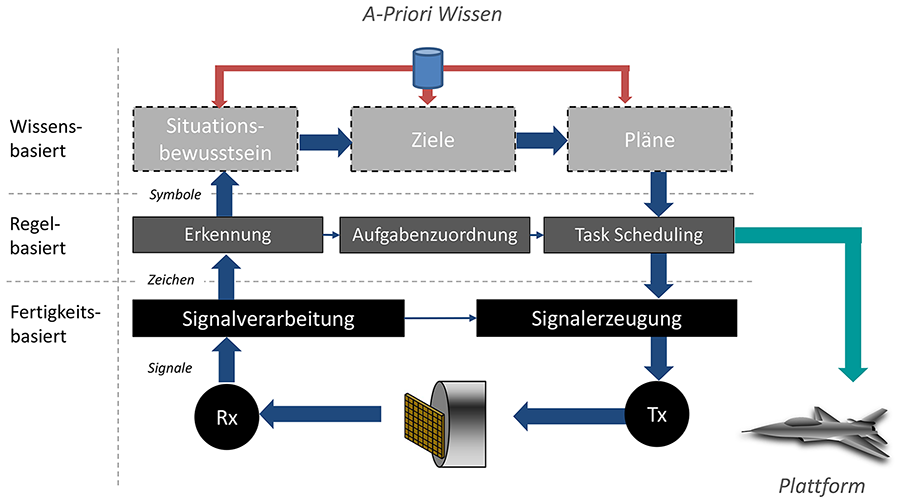Cognitive Radar and Classification
Modern radar systems represent intelligent sensors with a variety of software-defined degrees of freedom. Cognitive radar control enables optimal adaption of the waveform and other parameters to the environment. Machine-learning techniques and other methods from the field of computer-science and artificial intelligence allow for the automation of cognitive abilities and expert-knowledge, that was previously confined to subject-matter-experts.
The concept of cognitive radar pursued at Fraunhofer FHR hence follows the “Three-Layer-Model” of human cognitive performance.
The lowest level of skill-based performance describes the layer of continuous signal processing. It relies on adaptive signal processing methods and provides an estimate of the environment and the transmission channel. This can then be utilized for optimally matching the transmission wave to the environment and executed radar task. Technological improvements, such as AWGs, DSPs and FPGAs allow for experimental verification of the concepts at FHR.
The level of rule-based behavior utilizes the underlying skill-based-layer of signal processing. The perception-action feedback loop that is typical for cognitive radar is implemented in a reactive, rule-based fashion. The competency in the field of classification for scene recognition has historically emerged from the task of determining the class (or even identifying the type) of aircrafts, vehicles and ships, solely based on their radar-signatures. The classification methods developed are based on a comparison of the measured signature with a set of potentially relevant objects in a reference data base (“Non-Cooperative Identification”). As opposed to traditional approaches in image-processing, the unique features of radar-signatures are exploited. An adaption to detection problems in other applications fields, such as automotive-radar or material sciences can easily be achieved.
The knowledge-based processing layer represents the highest level of abstraction under consideration of external data or interfaces. Such a task- or goal-based radar system exhibits a semantic understanding of the radar-scene with respect to the current radar task and is capable of planning a long-term sequence of radar-modes in the anticipated mission context. Furthermore, system-engineering and operational concepts need to be considered, when experimentally realizing such a fully integrated, cognitive radar system.
